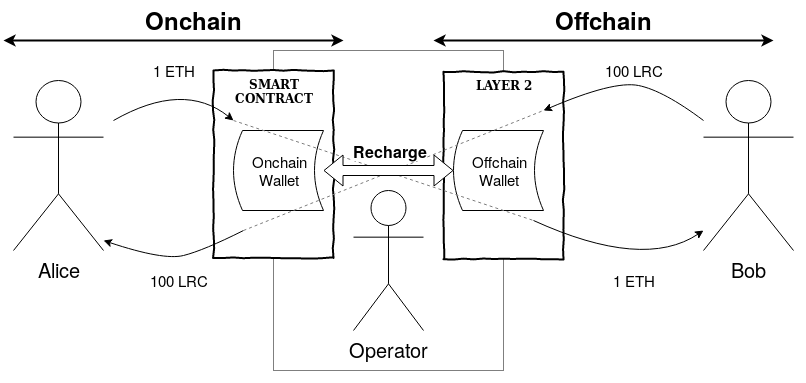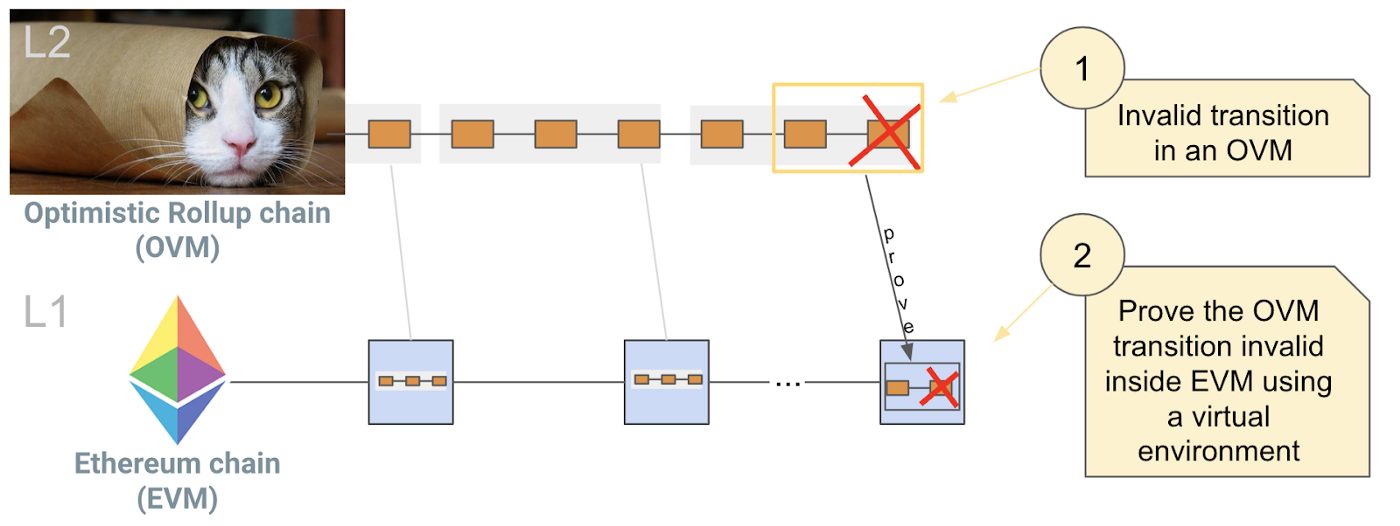
The crypto-mania phase concluded in 2018, and while some trailblazers left, others have been flocking the ecosystem. The cryptocurrency boom hasn’t stalled; it has gathered pace penetrating every industry, including gambling.
Developers have worked days and nights, transitioning initiatives and ingenuity from white-papers to innovative products. This period has been perfect for blockchain and crypto designers to lay the essential infrastructure required for mass adoption.
One of the latest, and what is proving to be a fundamental product in this fledgling architecture, are “layer 2” solutions – scalability solutions built on top of the existing base blockchain. These solutions bring a workaround to the existing blockchain scalability and transactions-per-second (TPS) bottlenecks.
In blockchain technology, there’s is a notion referred to as ‘Impossible Triangle’, connoting the system’s utilities of scalability, security, and decentralization. In the current ecosystem, security and decentralization are remarkably achievable, but not scalability! This brings about what is called ‘Scalability Problem’, a system’s inability to deal with the increased number of TPS.
Layer 2 solutions exist to allow the decentralized blockchain infrastructures to evolve and enable a variety of functions such as performing off-chain computations and scaling payment volume and speed. For gambling platforms, layer 2 solutions are crucial in scaling the creation and execution of betting smart contracts.
Such solutions work impeccably to increase a system’s ability to handle large volumes of TPS. Unfortunately, layer 2 solutions in gambling are limited and have not penetrated much into this sphere. Currently, only FunFair is leveraging this game-changing blockchain technology.
Bitcoin geeks and cryptocurrency aficionados often use phrases ‘lighting network’ and ‘layer 2’ interchangeably when referring to scalability solutions in the blockchain. The truth is that these terms aren’t interchangeable and don’t mean the same thing!
In reality, Lighting Network is a technology that offers layer 2 for bitcoin and other cryptocurrencies that use micropayment channels to scale their blockchain capabilities to conduct transactions. The main idea is to eliminate key liabilities associated with bitcoin by operating on top of a blockchain layer, thus offering ‘layer 2’.
Lightning Network permits faster transactions between participating nodes by adding the second layer. This is why this technology is viewed as the most viable solution to scalability problems of blockchain.

In crypto gambling, this capability presents a number of benefits. First, by moving the transactions away from blockchain’s main layer, the Lightning Network takes transaction pressure off of crypto-coins and, in turn, reduces the associated transaction fees.
Second, transactions that are conducted on Lightning Network also lightning quick (instant), meaning that this capability substantially boosts cryptocurrencies as mediums for daily use in crypto casinos.
There are only a handful of casinos that are harnessing the Lighting Network at this stage, including BitKong and Luckydice.
Loopring is a revolutionary open protocol that was designed to pivot the building of decentralized exchanges. It functions as a set of smart contracts that verify tradeable orders and performing trade settlements on-chain while managing all orders off-chain.



The goal was to bridge the gap between the on-chain and off-chain, to provide the least amount of friction and increase user experience tremendously. As noted previously, doing operations off-chain is vital for scalability as well as immediacy and cost-effectiveness in transactions. Using Loopring, you can deposit funds from an on-chain wallet to exchange, trade, and withdraw funds back to an on-chain wallet.
This non-custodian order book-based Decentralized Exchange (DEX) was built using a technology called zero-knowledge (zk) to provide fast transactions and low settlement costs secured by Ethereum. Those who use Loopring deposit their assets on-chain into a “zk Rollup” smart contract, and transact off-chain through layer 2 solutions.
This means that the users’ funds do not get transferred, rather trades are submitted and stored in layer 2 stores representing users’ accounts, trade histories, and balances. Changes are implemented on-chain through the submission of valid zk proofs to the ZkRollup contracts. This capability enables not only instant payments in a second but also free transactions with zero block confirmations.
On this zkRollup exchange and payment protocol, you can deposit and exchange Ethereum and ERC-20 via on-chain transactions. At present, Loopring Exchange has completed over one million trades, and with the Loopring wallet (Loopr), you can manage your assets and orders in a reliable solution.
For crypto-gambling enthusiasts, the Loopring Exchange and wallet provides a variety of advantages that cut the speed of transactions while maintaining the security you’d expect with Ethereum; all the while retaining complete control of your assets. Loopring also allows players to conduct easy and straightforward ETH/WETH (ERC-20 Ether) conversions, and easily access their wallet without worrying about cons and hackers.
Optimistic Virtual Machine (OVM) is another vital tech that was designed to help any developer scale Ethereum smart contracts with absolute ease. OVM is basically a virtual machine that was designed to support all layer 2 protocols for Ethereum.


Ethereum layer 1 will give you trust and great configurations, but layer 2, as noted earlier, will give you efficiency, scalability, and efficient state of fraud-proof. The OVM also comes with cost-effectiveness, given that L1 Ethereum Virtual Machine (EVM) is normally expensive.
By using off-chain data to guarantee what will happen to L1 state, a group of developers created the OVM, guaranteeing what they term as ‘optimistic decision.’ In other words, one can describe OVM as a virtual EVM that supports smart contracts to be deployed on optimistic rollup chains.
The described steps in making an optimistic decision essentially entail, looking at L1 and figuring out what could possibly happen in the future; then looking at off-chain messages and what they guarantee if used in L1, and finally restrict the expectations of L1 future based on such guarantees.
This concept may appear a little bit complex and new, but it is thought to have great potential as the rise of cryptocurrencies continues. The production of fully-functional OVMs is not yet, but the alpha release (backend) that enables full EVM support is already out and demoed n Uniswap and Synthetix.
Within the same line is the second major component, referred to as ‘transpire,’ that converts L1 contracts to L2 contracts. The transpire has only been tested with Waffle. Once completed, the OVM presents exciting possibilities in the gambling world, including lower transaction fees, enhanced transaction speed, and transaction capacity/volume.
Snowballing the number of TPS in a blockchain is considered one of the massive hurdles digital currencies such as Bitcoin and Ethereum, as well as other decentralized payment platforms face. This has created what is now commonly characterized as a crypto-scaling problem.
As highlighted in this post, recent breakthroughs in this space have given rise to layer 2 solutions that could provide solutions to crypto scalability issues such as transaction throughput.
With protocols such as Lightning Network, Loopring Pay, and OVM, crypto gambling platforms and users could reap the benefits of faster, cheaper, and high-volume transactions.
To find out how we use cookies, please read our cookie policy or click accept to continue.
Sign up for exclusive bonuses from Thecryptostrip